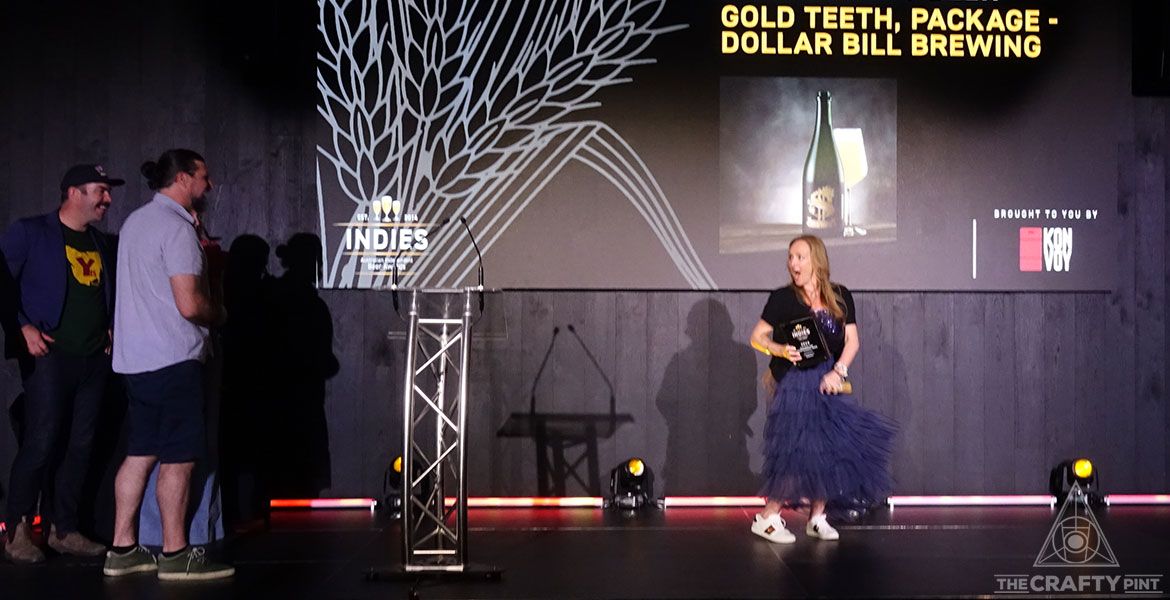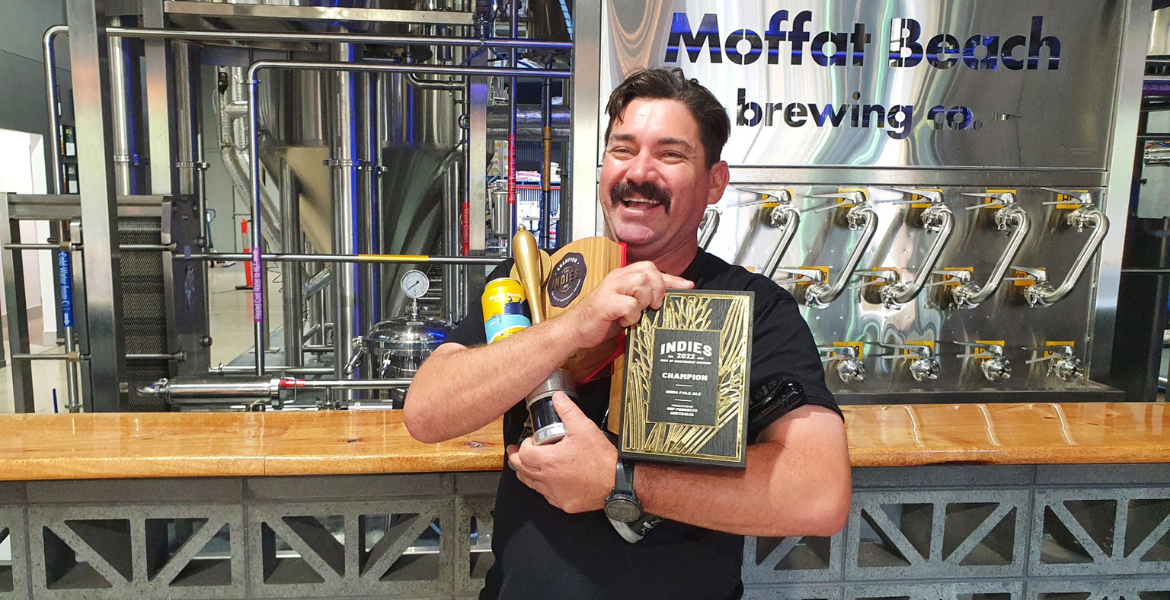When was the last time you drank a good beer? What about a great beer? Have you ever had a beer so good you cried salt tears because you wondered if you’d ever drink something quite as delicious again?
OK, maybe the last one’s just me… but the point is that sometimes a beer isn’t just enjoyable, it can stop you in your tracks with its perfection. It can make you want everyone around you to try it too so they can bask in its glory.
But how do you decide what makes a beer good and what separates a good beer from a great beer?
Perfection might be subjective, but at professional beer competitions there’s a rigorous process. Throughout any given year, brewers submit their beers to be assessed by their peers and others from the wide world of beer, seeking feedback on what they’re brewing and, hopefully, a shiny medal or trophy to place on their label and behind the bar.
But just what makes a beer deserving of a gold medal or trophy? What separates a silver from a gold? And do beer awards matter?
Certainly, given the comments on social media that often follow the publication of results articles – along the lines of: “Who voted for that?” – it’s clear not everyone understands what goes on during judging. Because these awards aren’t a popularity contest like the GABS Hottest 100 or open to being swayed by marketing noise: they’re tightly-controlled operations.
With awards competitions growing in tandem with the craft beer scene, we decided to take a look inside the process from start to finish: to trace how a certain beer style is judged and how a beer is declared champion in any one category.
Like all good sagas, this piece forms the final chapter in a trilogy, capping off A Day In The Life Of: A Beer Steward and The Story Of: Moff's Summer Ale.
To put it all together, over multiple days in September, I sat down with judges at The Indies to observe how they judge, what they’re looking for, and what makes a beer sing. With ten trophies handed out for different beer categories, we decided to provide a fly-on-the-wall insight into just one: the Juicy-Hazy class. It was making a first appearance at the 2022 Indies, which seemed as good a reason as any to track it above the others. And, hey, such beers are pretty darn popular too.
How is beer judged?
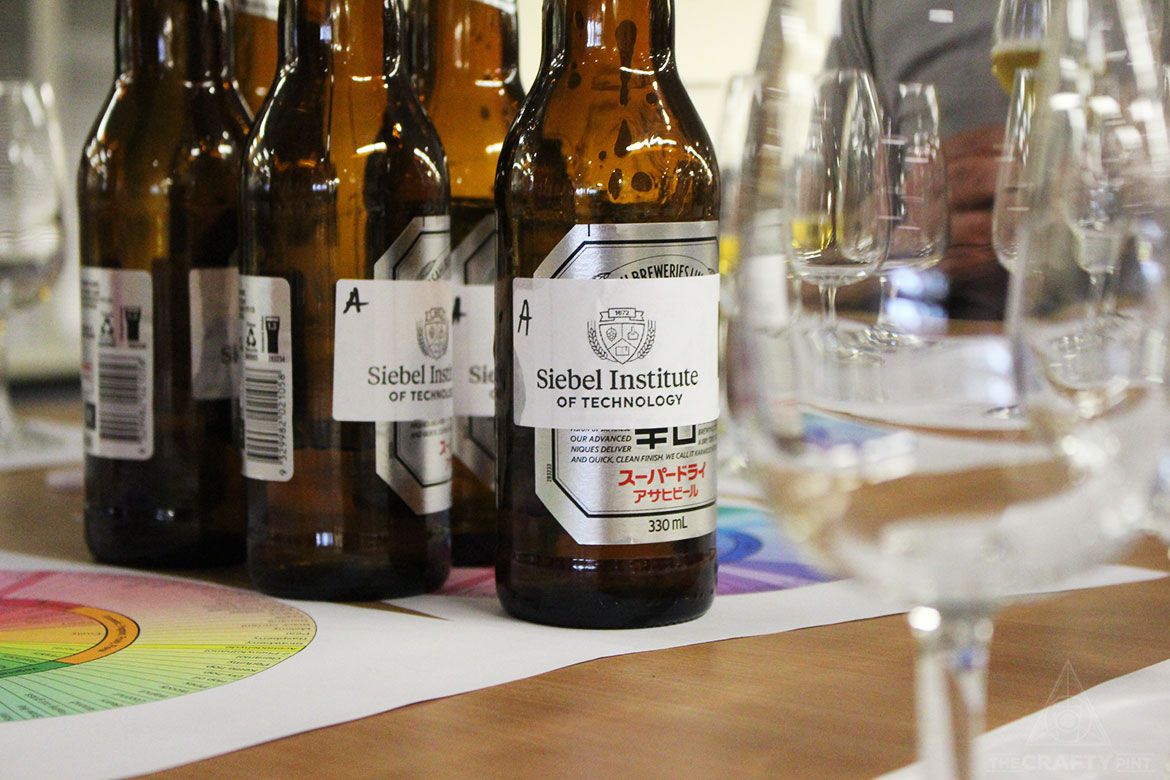
Well before a champion trophy is handed out at an awards ceremony, the beer goes through a rigorous process during which it’s assessed by some of the best beer palates in the country – and often guest experts who fly in from overseas. For the 2022 Indies (which is run by the Independent Brewers Association), judging took place over several days at the Moonee Valley Racecourse in Melbourne’s north.
Late on a Sunday in September, brewers, sales reps, ingredients suppliers, consultants and beer educators gather for a session in which common beer faults are added to beers and then discussed; the idea is to provide an overview of what to look for that shouldn’t be there. After all, taste might be subjective but no faulty beer should score a medal.
Across the next two days, tables of judges work their way through flights of beers with just one identifying mark: their individual number. All 1,458 beers entered are judged by at least four people; nobody at any of the tables has any way of knowing who could have made each beer; and no brewer in attendance will be brought their own beer, something that requires a fair amount of pre-judging logistical planning.
At awards competitions, each beer is judged according to the style in which it’s been entered, as laid out in specific guidelines developed by the judging organisation. In this case, the font of all knowledge is the Indies Style Guidelines – at around 60 pages long, these booklets are as thick as a magazine and tend to end up about as dog-eared as anything you’d find in a dentist's waiting room.
Each beer is judged for its appearance, aroma, flavour and body, technical quality and whether it's brewed to style. At every table, for any category, the beers are assessed individually, scored out of a potential maximum of 20 points, before judges discuss them and agree on a final score. An experienced judge, or table captain, oversees each panel’s discussion and the flow of the day.
To be awarded a bronze medal, beers must score more than 14 points, the range for silver is 15.5 to 16.5, and to claim gold, your beer needs to be rated 17 and above. Bronze is a good beer, silver is excellent and gold is outstanding. And if you ordered any of the medalists in a pub, you'd happily drink them.
Every now and then the mood is lifted by a moment of joy: whenever a table awards a gold, the judges on that table tap their pens against a solitary glass, causing those on surrounding tables to look up to see which outstanding beer has broken their concentration.
Hazy Days
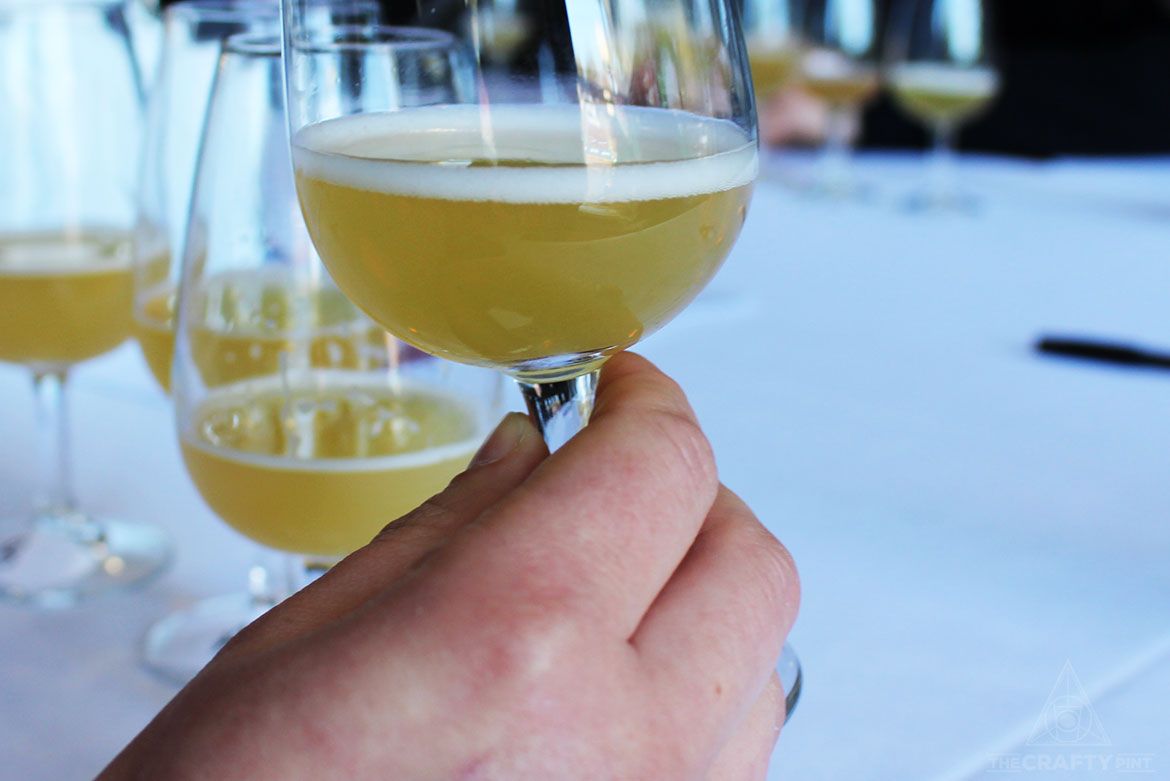
When it comes to the Juicy-Hazy category, a total of 162 beers were entered; 16 won gold, 48 claimed silver and 51 picked up a bronze medal.
The class itself featured four different Juicy or Hazy categories: Pale Ale, Strong Pale, India Pale Ale and Imperial Or Double India Pale Ale. Each beer is initially judged against others within its sub-category but, ultimately, it’s less about fitting into a style and more about finding some kind of perfection or finesse.
But before looking at how golds are awarded, however, let’s cover what makes a not-so-great beer. Within the Juicy-Hazy category, 47 entries failed to medal, meaning close to a third weren’t particularly nice to drink or didn’t fit the category into which they were entered. On the latter point, having beer rate badly at awards isn’t always the worst thing; some beers don't sit neatly within a style category and, in an industry full of innovation and experimentation, brewing to guidelines can be the last thing on a brewer's mind.
However, if you’ve been drinking craft beer for a while, the sort of terms judges use to describe those beers considered faulty might serve as a reminder of your last bad juicy pint: too sweet, not enough structure, flabby, bitterness is too high, the hop intensity isn’t quite there, there’s mustiness or cheesiness; “I got a lot of grainy cereal and dustiness on it.”
Of course, the language is often more technical, with mentions of diacetyl – a brewing byproduct that adds flavours often described as butterscotch or popcorn – and chlorophenol characters that can taste like burnt rubber. The impact of oxygen on many beers can be particularly damaging, leading judges to wonder whether a beer is merely too old and might once have presented better.
Terms like yeast bite and hop burn also crop up frequently. One judge says to me that while the hop aroma in a certain beer might be appealing, and it presents with the expected soft and pillowy mouthfeel, the presence of astringency can make such beers challenging to finish.
“You drink it and all you are getting is really harsh yeast bite or hop burn,” they say.
“Some of the more confronting ones were on that spectrum. Some just grab all the hop oils and everything and you swallow it and you’re choking on the back of your palate.”
Although hazy beers are often talked about in terms of hops, the same judge adds that malt choice is often the difference between a beer that works and one that doesn’t. It’s a point made during judging, with these hoppy beers often let down by their use of malt.
“Whether it’s wheat or oats – whatever you want to use – you really have to get that dialled in to carry how your hopping regime works,” the judge tells me.
“We saw a lot of really hoppy beers that were like they’d just had bags of hops tipped in. And it could be Citra that’s an amazing hop, but doesn’t have anything to carry it through.”
Not All That Glitters is Gold
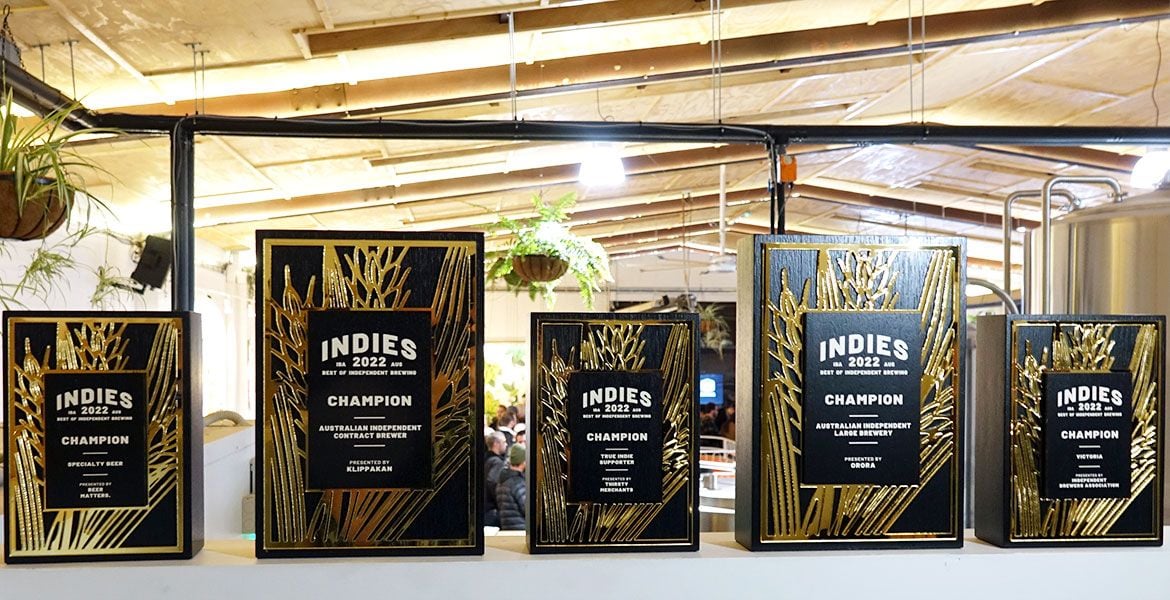
Although no faulty or flawed beer should ever get a medal, not all medals are created equal.
So, what separates a silver from a gold?
One judge describes the difference between a good hazy and a great hazy as being the level of complexity brought forward by the hops – it’s not just about big flavours but about well-integrated hop characteristics.
“It’s about having complex hop aromas,” is how they put it.
“It's all very well to take a bunch of Simcoe and hop it at 40 grams a litre but then it’s linear. So, you get it upfront and might go, ‘Woah!’ but then there’s really much else there.
“Beers that are really well-crafted from a hop perspective are the ones that just keep giving you a layer, so you might get tropical fruit and then you get some really nice stone fruit and then mandarin.”
The Golden Table
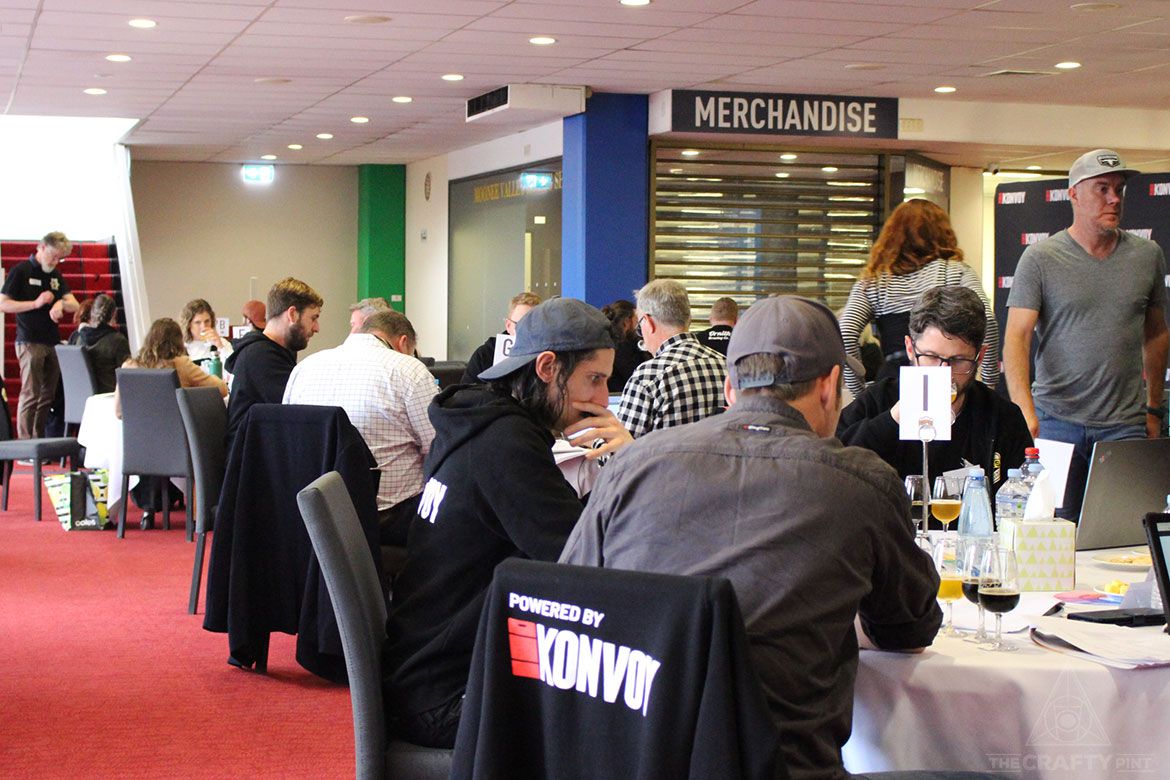
After two long days working through more than 150 hazy beers in one hoppy category, a total of 16 beers have received gold medals. But how does one of those go on to be declared Champion Juicy-Hazy for 2022?
On the third and final day, things are different. By this point, the focus is solely on those gold medal-winning entries. At some beer competitions, only those golds that are particularly glistening – those with the very highest scores – will be rejudged. But at The Indies, every single gold is now reassessed in a process that’s more time-consuming but ensures each gold passes through more lips.
In terms of the Juicy-Hazy class, three tables of judges are presented with different flights of the gold medalists; they’re given an A4 sheet of paper letting them know which of the four subcategories each beer was entered in: Pale Ale, Strong Pale, India Pale Ale and Imperial Or Double India Pale Ale if your memory needs jogging.
Each table is tasked with putting forward two beers that will ultimately face off against the other tables’ picks in yet another round of assessment. Once again, nobody knows what the beer in front of them is, with the earlier numbers now replaced with letters: A through to F.
“These are all really good beers and now we’ve got to pick which are the best on here,” the table captain says.
Each judge goes through the six beers in silence, before putting their top two choices forward to see if there’s common ground. There isn’t, but D doesn’t make it into anyone’s top two, so it’s removed.
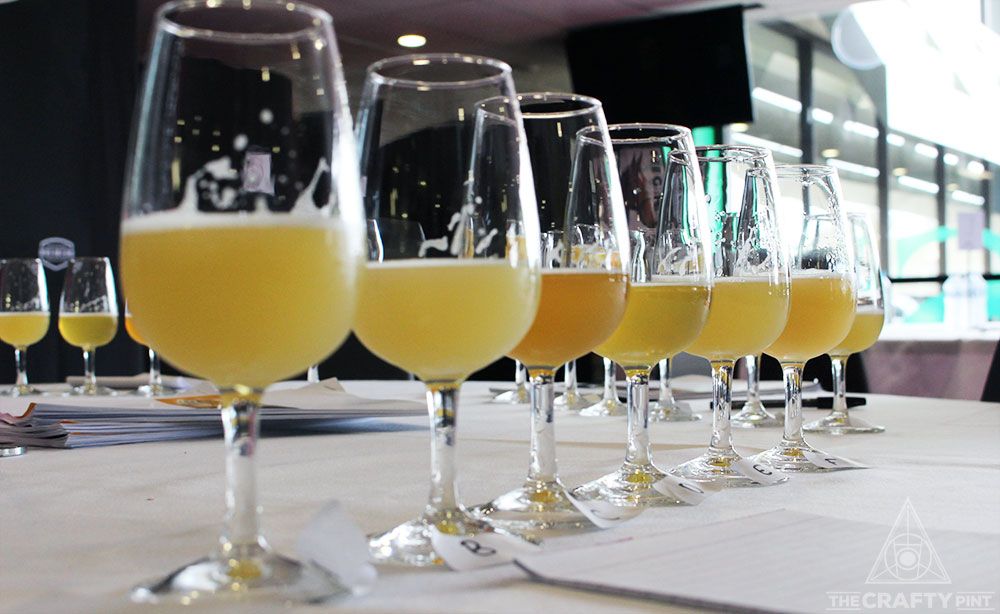
The discussion that follows is thoughtful, considered, and sees each judge make the case for their two top beers. They talk, return for further sips, pick them apart in conversation, and decide what tastes best out of a lineup of really good beers.
“I really like the hop aroma on C. I think it’s really complex, interesting and unique with passionfruit and peach, while having some really subtle mandarin without being too citrusy.”
“Well, C was my third pick.”
“That was number four for me.”
“I liked it for a number of reasons but really disliked it for a couple of other things. It’s just a bit stewy or grippy on the backend and a little hot.”
“I thought it was a really fresh, well-balanced example.”
“There’s a lot of things I really like about this beer but a couple of elements I didn’t rate.”
“It’s still a really good beer, this is why it gets so challenging.”
“I think the balance of malt sweetness and bitterness with the hop aroma is something they’ve nailed. But it just lacks the finesse, and the carbonation doesn’t follow through on the palate”
“It carries the sweetness without being overwhelming.”
“I’m happy with C and E and it looks like we’ve all got one of our original choices.”
An agreement is reached, the beers are picked and, nearby, the two other tables continue to talk through the hazy beers in front of them.
The Final Countdown
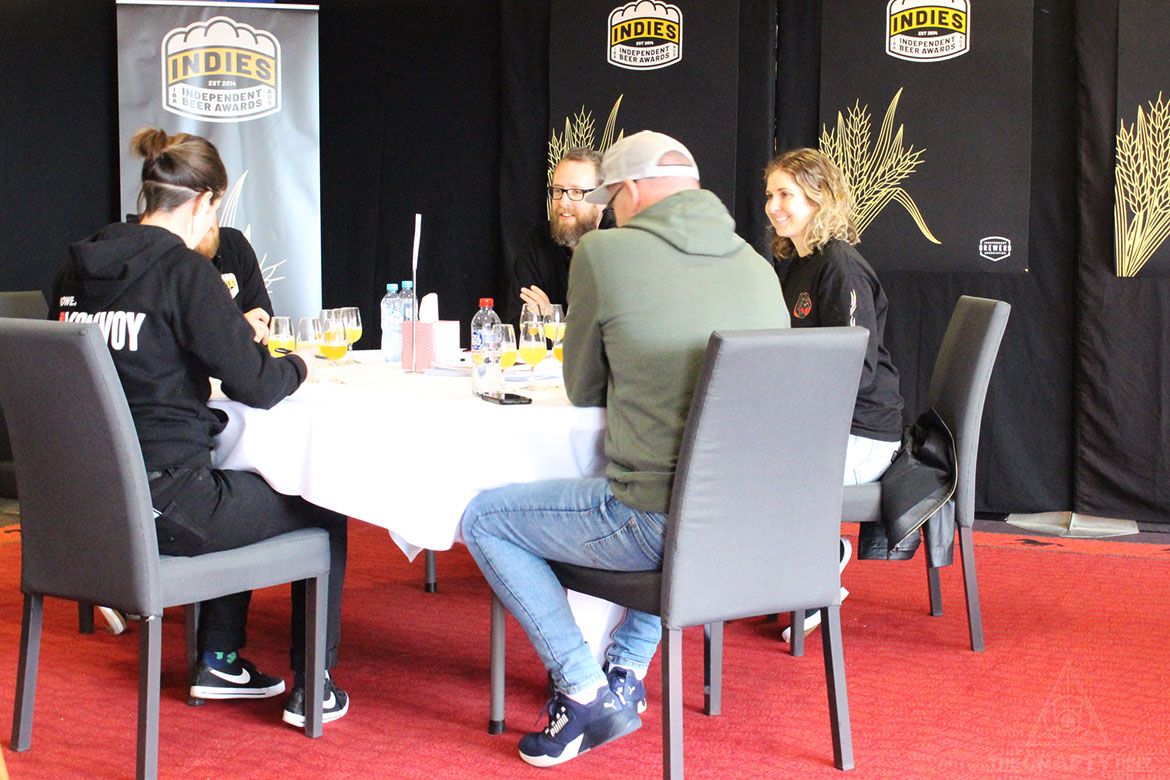
In the early afternoon of a Wednesday in an unremarkable room that the 1990s want back, six hazy or juicy beers are placed in front of five judges at the Moonee Valley Racecourse and the champion round of judging begins.
Each of them has already been judged as outstanding but only one can become the champion.
Unlike earlier rounds, this takes place in absolute silence. Each beer has been allocated a new letter, and each judge has to pick their favourite, numbering them all from last to first. Those rankings are ultimately judged against one another before the Champion Juicy-Hazy Beer is declared.
Each of the beers might be delicious but the work isn’t easy. Indeed, it’s tough simply because they are all delicious. Following the round, I ask one of the judges how they picked their top beer as we both sneak a glass of gold medal beer.
“It's hard because, usually, you're just judging against the style guidelines,” they say. “But with these, you’re picking the best of the best and you really are comparing them to the other beers.
“And some of the other beers might have just missed one tiny element, like lacking in a bit of body or having a little bit of a harsher finish, or perhaps lacking a bit of aroma.”
In terms of their favourite, they felt the hop expression on both nose and palate hit that perfect note.
“For this one, everything about it was there,” they say. “It was so vibrant and popped out of the glass for me, and then it was totally backed up by the mouthfeel.”
Another judge talks about how one beer in front of them just sparkled that little bit more.
“It is really hard to describe, it just popped,” they say.
“To me, it just ticked all the boxes perfectly. There was just something about it that just jumped out more than the other five – but you’d happily drink [them all].”
It’s a process that, by its very nature, has an air of subjectivity about it since there are certain flavours we all like that little bit more. But it’s why there is a group of judges picking each apart on their own and combined, they're drawing on decades of beer industry knowledge and experience. Later in the day, the Champion Hazy will face a similar process in the Champion Beer round in which White Bay’s Lager will ultimately top the entire competition.
“At the moment," the judge says, "out of the six that I had, that was the one that just to me was fresh and exactly what I expect if I close my eyes and go, ‘This is what a hazy should be.’”
Forever Exploring
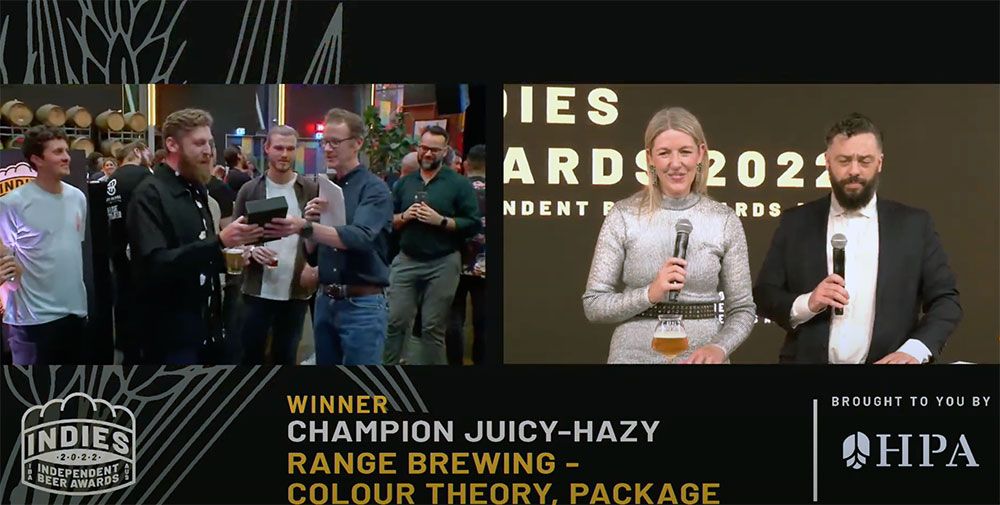
OK, so it might feel a little ridiculous to do this for an award that was announced some months ago but if you’ll allow me…
*...drumroll...*
Congratulations to Range Brewing, winners of Champion Juicy-Hazy for their Colour Theory!
Sure, having it confirmed that Range make good hazy beer won’t surprise many (they do make a lot of them, after all) but in this case they’re not just impressing beer lovers but the nation’s expert judges too. What's more, not only did Colour Theory (in canned form) take out the trophy (with kegs of the same beer awarded silver), their Double Dripping In Green: Citra received gold in both packaged and draught form in the same category. This follows the brewery’s Fahrenheit winning Champion Australian Independent Beer in 2020.
So what impressed judges about Colour Theory? Well, to borrow from the feedback they provided, this hazy IPA had “great tropical hop flavour”, a “lush palate” and the sweetness versus hop character was right. More succinctly: it was a “banger”.
The beer’s release in August was the second appearance of a beer brewed with Citra pellets, Citra Cryo and Mosaic hops. Range’s head brewer Mitch Pickford says it’s the kind of hop combination they use often, with the blend – and Citra in particular – really suited to the style.
“We use a lot of Citra,” he says. “Some people might go, ‘Citra, it’s almost like cheating’, but my response is: ‘Yeah it is’.
“There’s a reason why everyone uses it: it fits perfectly for the style.”
While the choice of hops changes from IPA to IPA, Mitch says Colour Theory follows a recipe they spent a lot of time perfecting and now they’re happy with it, it’s essentially their base IPA.
“Much like with our DDH pale,” he says, “we have a base for it and then we rotate through different hops and hop combinations and we'd like to experiment with new hops or specialty hop products. So it's very nice and quite rewarding to know that our base IPA [won the trophy].”
That satisfaction hasn’t come overnight, of course.
“We've probably done more tweaking of that base over the last two years than we ever have,” Mitch adds.
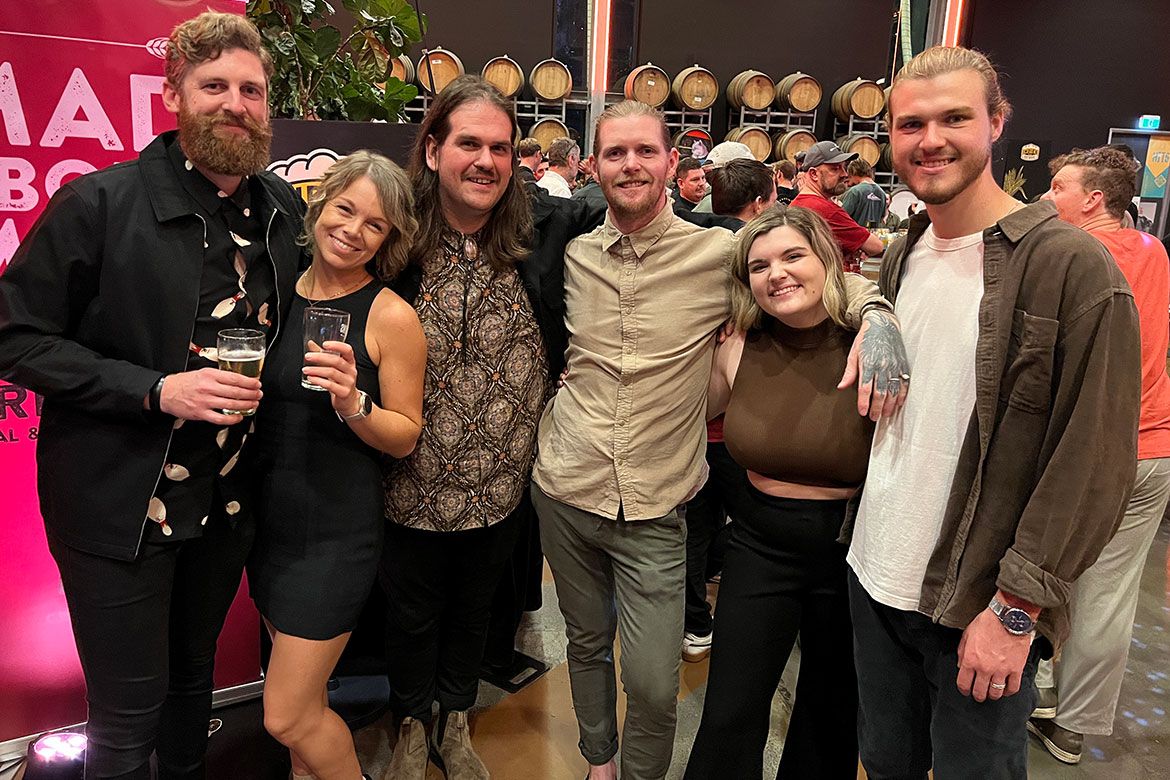
The reason for the change was an issue faced by many brewers who heavily dry-hop beers: hop creep. It’s a problem caused by the interaction between enzymes in hops and yeast and can see beer slowly referment, overcarbonate or pick up diacetyl.
“Obviously, a lot of breweries in the last [few] years have had big issues with hop creep and we were no different,” Mitch says.
“So we really worked hard to formulate a plan around that, and to nullify it for ourselves. We changed our whole dry-hopping method and then we saw our fermentation change because there was no hop creep, so we had to adjust for that as well.”
Throughout 2021, they spent a lot of time trialling different recipes and processes to see if they could get the most out of their hops, all while avoiding hop creep. It involved much research and conversations with other brewers as they pulled apart each hazy IPA they brewed.
“We were making these beers where we’d go, ‘That’s a really good beer but it’s not really us, our identity, or what we wanted to showcase in hops.’,” he says.
“We lost a bit of that true expression that we're known for, which is really big, juicy, flavourful beers.”
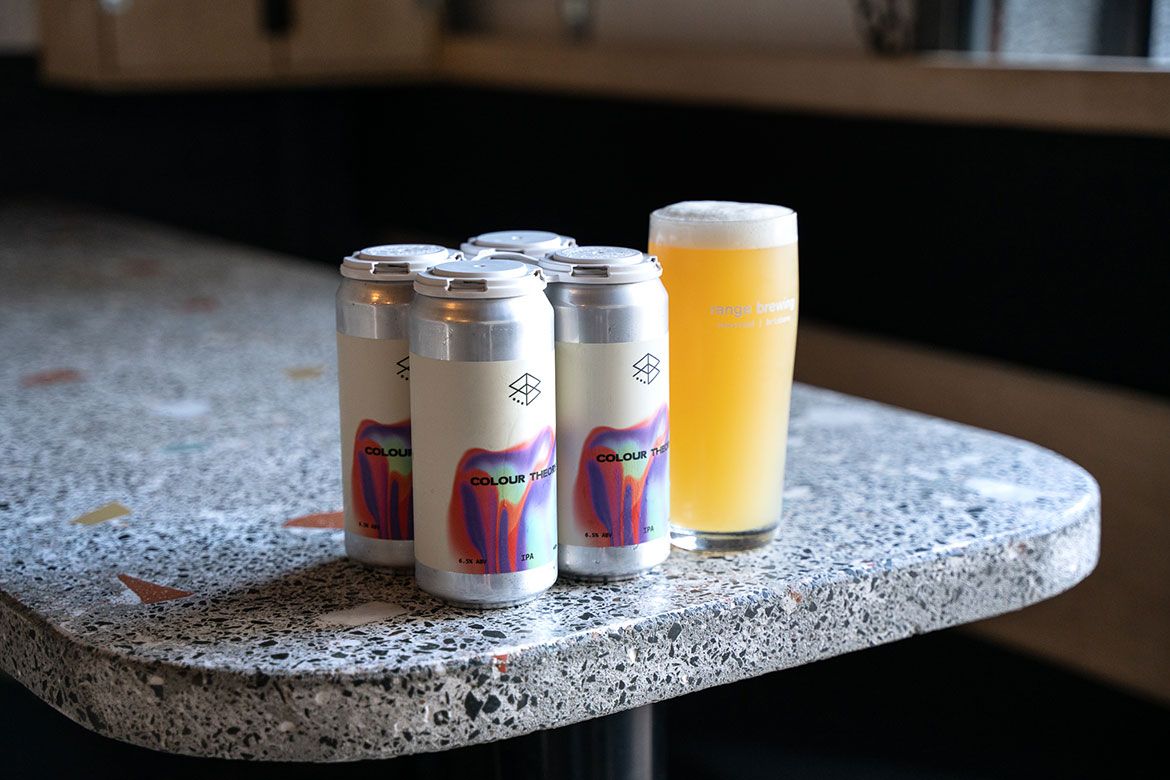
It was during this period that the 2021 Indies rolled around. They decided to enter and, unlike the years either side, they failed to pick up any gold medals, although they did receive several silver and bronzes. They might have left the night without a trophy or gold but what they did receive speaks to why awards often matter so much to brewers - feedback on their beers.
“We were doing a lot of changes, so we weren't really honed down on anything,” Mitch says. “But we did enter last year just to see where we're at and to see what the judges thought of a few different things. That was good for us because we got some really good feedback on what we were trying out.”
Then, around ten months ago, they found what they were looking for: the right hop expression without the hop creep. As a result, for now at least, when it comes to their motto – Forever Exploring, Forever Evolving – there’s less evolving, even if the exploring never stops.
“We're so happy with the beers that it's producing that we don't really want to play around with it,” Mitch says. “We can kind of put all different hops in right now and get something that’s really consistent, very juicy, and very expressive in the hop characters.
“What that award shows is that we're definitely on the right path with it. All the changes we did and all that research and development that we did has really worked and paid dividends.”
With some of the best beer palates in the country agreeing, Colour Theory is now a champion beer. And while the award reinforces how they brew, it’s also a recognition of what they set out to do each and every day.
“We try to make champion beer every single day of the week,” Mitch says. “That's all that we're trying to do."
For more on how beer competitions are run and how brewers make it to the top, you can check out A Day In The Life Of: A Beer Steward and The Story Of: Moff's Summer Ale, which form a trilogy of sorts with the above article.





